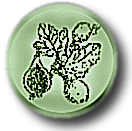Subsystem: Transport of Nickel and Cobalt
This subsystem's description is:
Nickel and cobalt are essential trace elements for many living organisms. To acquire sufficient cobalt or nickel for metabolism, bacteria have a variety of high-affinity uptake systems.
For more information, please check out the description and the additional notes tabs, below
| Diagram | Functional Roles | Subsystem Spreadsheet | Description | Additional Notes | |||||||||
Oops! We thought there was a diagram here, but we can't find it. Sorry
Nickel and cobalt are essential trace elements for many living organisms. To acquire sufficient cobalt or nickel for metabolism, bacteria have a variety of high-affinity uptake systems. Nickel/Cobalt Uptake Transporters. Updated by VV CbtJKL cobalt ABC transporter (as in Sinorhizobium meliloti) Expression of the cbtJKLgenes is controlled by (cobalt-loaded) cobalamin interacting at the B12riboswitch, located within this large upstream region, cbtJtranscription is repressed upon addition of cobalt or vitamin B12, and deletions in the B12riboswitch resulted in constitutive cbtJKL transcription. PMID 21725018 Functional variants: 1. CbiMNQO: cobalt ABC transporter (as in Salmonella typhimurium). CbiM and CbiQ are integral membrane components. CbiO is an ATPase. Small component CbiN has two predicted transmembrane segments and a 40-60aa length loop between, which is most likely extracytoplasmic and could be involved in the substrate recognition since all CbiMNQO transporters lack a classical substrate-binding component of ABC transporters. 2. NikMNQO: nickel ABC transporter (as in Streptococcus salivarius). NikM and NikN components could be fused in a single gene. NikM, NikQ and NikO are similar to CbiM, CbiQ and CbiO, respectively. NikN and CbiN have the same topology prediction but are not similar on the sequence level. 3. NikKLMQO: nickel ABC transporter (as in Actinobacilus spp.). This variation of NiMQO transporter lack the NikN component, and have instead unsimilar component NikL, which also has a predited topology with two transmembrane segments and about 100aa length loop between. In all cases except three cyanobacteria (that are all Gram-negative bacteria), nikLMQO is accompanied by an additional periplasmic component NikK, which has a signal peptide, and could be a substrate-binding component of ttransporter. 4.NiCoT: secondary nickel/cobalt transporter (the same specificity to Co and Ni, but the preference is mixed from case to case) 5. HupE: secondary nickel/cobalt transporter (mostly predicted to be nickel-specific, and only in marine cyanobacteria it is predicted to be a cobalt-specific). 6. UreH: secondary nickel transporter 7. NikABCDE: primary nickel transporter (ABC cassete). NikA is a periplasmic substrate-binding component, NikB and NikC are permease components, and NikD and NikE are ATPases. There is quite diverged branch of the nickel-specific nikABCDE transporters (frpm phylogenetic analysis) described here in a separate column (NikABCDE2). 8. CbtA: predicted cobalt transporter (secondary) 9. CbtC: predicted cobalt transporter (secondary) All other variant codes (two to three digits) are combination of the above nine (some organisms contains several nickel transporters or both nickel and cobalt transporters). Predictions of nickel specificity was based on the positional clustering with genes encoding Nickel-dependent enzymes (urease, NiFe hydrogenase, CO dehydrogenase, Ni-containing superoxide dismutase in cyanobacteria and Coenzyme F420-reducing hydrogenase in methanogenes) and on the predited binding sites of the nickel repressor NikR (to be published). Predictions of cobalt specificity was based on the positional clustering with genes involved in the biosynthesis of cobalt-containing coenzyme B12 and on the predited regulatory elements (B12 riboswitches). Rodionov DA, Vitreschak AG, Mironov AA, Gelfand MS. (2003) Comparative genomics of the vitamin B12 metabolism and regulation in prokaryotes. Journal of Biological Chemistry, 278(42): 41148-59. | |||||||||||||




